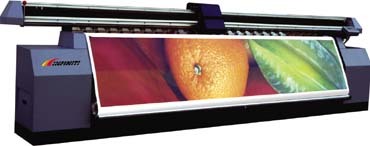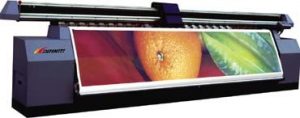Business Management
How to Buy From, or Sell to, the Chinese
Competition is good, unless it blows the cork.
Published
18 years agoon

Writer Alisa Priddle, in the April 2004 edition of Ward’s Autoworld, recounted a Roland Berger Strategy Consultants LCC report (conducted for the Original Equipment Suppliers Assn.) that forecasts global manufacturing and distribution changes in the $876 billion (2003) auto-parts manufacturing business.
Cautioning that emerging markets will grow at four times the rate of mature markets, the report said the United States’ share of global production will decrease 18% by 2010 — 70% of those losses, Pride said, will be in automobile-parts manufacturing. This is due, mostly, to predicted market-share losses by Ford, GM and Daimler-Chrysler.
One reason — and here’s the rub — is that average hourly labor rates for manufacturing vary internationally: Japan, $23.90; Korea, $11.20; Taiwan, $5.90; Mexico, $3.20; and China, $1.30.
In the United States, the average is $33.60.
Want to do business in, or with, China? Start by calling one of the 40 (worldwide) offices of the Hong Kong Trade Development Council (TDC). The TDC’s Chicago office, directed by Richard Tam, is located at 333 North Michigan Ave., Ste. 2028, Chicago, 60601. You may telephone Richard at (312) 726-4515 or e-mail him at chicago.office@tdc.org.hk. I called him last week, asking how someone — anyone — can do business in, or with, China.
“Call us first,” Richard replied, explaining that TDC provides free information, plus match-up services, to U.S.-based companies — including, he emphasized, smaller firms — that are interested in buying from, or selling to, the Chinese. “We encourage U.S. businesses to use Hong Kong as a gateway to China,” he said.
AdvertisementTDC includes the Hong Kong Exporters Assn.; the Federation of Hong Kong Industries; the Chinese General Chamber of Commerce, Hong Kong; the Chinese Manufacturers Assn. of Hong Kong; the Hong Kong General Chamber of Commerce; and the Indian Chamber of Commerce, Hong Kong. $image1
Essentially, it’s the global marketing arm and service hub for Hong Kong-based manufacturers, traders and service exporters. The organization is sponsored, in part, by the Hong Kong government, but is operated by a 19-member council of Hong Kong business leaders and senior government officials. Its world headquarters address is: Office Tower, Convention Plaza, 38th Floor, 1 Harbor Rd., Wanchai, Hong Kong. The telephone number is (852) 2584-4333, and an information request e-mail address is www.tdctrade.com. Peter Woo is TDC’s chairman and Frederick Lam the executive director.
In my November 2003 column (see ST, page 14), I quoted Ya-Ping Zhou, the Greater China director for the Assn. of Supplier of Printing, Publishing and Converting Technologies, as saying Chinese businesspeople possess strong technical knowledge, but use ineffective marketing and sales practices. At that time, Ya-Ping was helping Asia-Pacific businesspeople expand their business endeavors outside that region by building an educational website (www.meihu.com.cn).
Later, I talked to Victor Xu, whose company, Aeromatrix/Fei Yeung Union, partners with Fei Yang Group, a wide-format, digital-printer manufacturer located in Shanghai. Aeromatrix imports, markets and sells grand-format, digital-print machines.
When asked, Victor commented that Western print-machine buyers’ requirements are opposite those of the Chinese. Westerners want attractive, high-quality, digital-print machines. The Chinese want acceptable print quality and a low price, which explains the low-output quality of China’s first-phase printers. To sell in the United States, Victor said, Asian print-machine manufacturers must modify their machines to suit Western tastes.
Asian-based, digital-print-machine manufacturers that are relatively fresh to the U.S. market showed up 10 strong at the International Sign Assn.’s (ISA) Sign Expo 2004 (Orlando). We’ve seen these new brands and faces — mostly from China, Taiwan and Korea — lingering in the tradeshow wings, until this year. At the 2004 show, their booths, products, language and public-relations skills improved significantly.
AdvertisementSaying they’ve sold more than 397 printers worldwide, these 10 manufacturers offered 31 models of large-format digital printers to signmakers who attended the ISA. Of these, 12 models were flatbeds, and seven of those flatbeds use UV-based inks. The prices ranged between $27,000 and $300,000. We cataloged the machine statistics, finding print sizes up to 133 in. wide, resolutions up to 1440 dpi (the norm was 360), and, although one manufacturer claimed outdoor print life up to five years, it averaged two years.
Most noteworthy, perhaps, is that these manufacturers are adapting their print machines to Western prerequisites — the applied technology and image quality have improved, as have the mechanical innovations and the overall “look” of the machines. Keundo Technology’s (Seoul) Super Q 3300S offers a “Backlit Quality” checking feature, for example, and the Azero (Shanghai) CREOM Jet UV-based flatbed allows the use of two different white inks.
Another trait, the increased machine width, achieves a wider print capacity and, of course, a higher selling price. If you’re a tool person, you know that stretching is the easiest and least expensive printer modification. Although a stretched printer’s ink-system needs modifying, the manufacturer’s primary focus is on machine-shop work — shaft and bearing modifications — not high-dollar technical conversions.
The Chinese are modifying more than their machines. An April 27 Financial Times marketing and business feature said, “The prospect of developing brands for Chinese companies is drawing international advertising groups deeper into the country’s heartland,” and tells of Western marketing and advertising firms venturing into China.
The Financial Times writer, Alexandra Harney, said incoming [Western] marketers believe that Chinese brands will one day be international household names. She indicated that overcapacity in many industries — and the desire to expand internationally — are driving Chinese companies’ branding efforts. Saying China’s entry into the World Trade Organization has intensified pressure on local executives, she wrote: “As domestic rivalry narrows profit margins, they are looking for ways to distinguish themselves and build their business overseas.”
Isn’t this what the Japanese did with their cars in the ’70s, their televisions and VCRs in the ’80s and, most notably to signmakers, their digital printers in the ’90s? And, is China really a businessperson’s Shangri-la?
AdvertisementFinancial Times writer Francesco Guerrera, in the April 27 issue, said, “…over the past few weeks, the unthinkable has happened: Foreign-investor sentiment has suddenly turned, causing sharp falls in the prices of Chinese stocks.”
Guerrera writes that analysts and investors blame disappointing company results and the recent reoccurrence of Severe Acute Respiratory Syndrome (SARS). He adds that Chinese authorities are looking at (corrective) measures to slow growth, including a rise in interest rates.
China officials worry that excessive, foreign, direct investment in the auto industry could lead to overcapacity in its entire manufacturing segment. For now, however, it seems that business is thriving — although this triumph may turn into the stone of Sisyphus. Overcapacity translates to excess manufacturing capability. And too much stuff for too few buyers translates to rock-bottom prices and trade wars.
Western analysts say China is the fastest-growing market for new cars and trucks in the world; on a parallel track, they worry that profits may decline if the industry increases its vehicle-building capacity. On April 16, Reuters reported that Delphi Corp., an automotive-parts supplier, generated $100 million in profit from China in 2003. This equaled 15% of Delphi’s total operating earnings. Reuters adds that Delphi’s China operations have benefited from the rapid growth of General Motors Corp. in the region, and that GM plans to add more production capacity in China. On May 17, Reuters reported that Volkswagen’s Audi division executives have forecast that Audi will increase sales in China to 80,000 cars this year, from 63,000 in 2003. Audi’s China-based sales jumped 28% in the first four months of this year.
China itself, due to excessive investments, grew 9.8% through the first quarter of 2004, Reuters said.
Were you a vision-endowed futurist, you might see a similarity here. A nebulous, but relative, similarity appears to exist between the presently prosperous auto-manufacturers procedures and practices and, closer to home, those of the digital-print manufacturing field. This is especially true if Asian — Chinese, Taiwanese and Korean– manufacturers choose aggressive (or crafty) marketing programs to promote their products beyond the Pacific Rim.
Truth is, overcapacity first benefits a machine buyer, but later hurts them. Overcapacity causes manufacturers to suffer profit losses and, soon, pinchpenny CFOs slash retooling and R&D budgets. Soon after, they cut operating expenses, and, while overburdening remaining staff, they lay off non-critical personnel. Over time, these actions set the suffering company back and also delay technological advances that should be presented to the machine-buying community, to remain competitive.
Predictably, several manufacturers emerge on top, but you can easily see that such circumstances cause irreversible corrosion across an industry.

SPONSORED VIDEO
Introducing the Sign Industry Podcast
The Sign Industry Podcast is a platform for every sign person out there — from the old-timers who bent neon and hand-lettered boats to those venturing into new technologies — we want to get their stories out for everyone to hear. Come join us and listen to stories, learn tricks or techniques, and get insights of what’s to come. We are the world’s second oldest profession. The folks who started the world’s oldest profession needed a sign.
You may like

American Sign Museum Names New Executive Director

3 Things Print Pros Must Do to Build Stronger Relationships in the Interiors Market

Graphics Turn an Eyesore Cooler Into a Showpiece Promo in Historic Plaza
Subscribe

Bulletins
Get the most important news and business ideas from Signs of the Times magazine's news bulletin.
Most Popular
-

 Tip Sheet1 week ago
Tip Sheet1 week agoAlways Brand Yourself and Wear Fewer Hats — Two of April’s Sign Tips
-

 Photo Gallery2 days ago
Photo Gallery2 days ago30 Snapshots of the 2024 ISA Sign Expo
-

 Ask Signs of the Times4 days ago
Ask Signs of the Times4 days agoWhy Are Signs from Canva so Overloaded and Similar?
-

 Real Deal1 week ago
Real Deal1 week agoA Woman Sign Company Owner Confronts a Sexist Wholesaler
-

 Benchmarks6 days ago
Benchmarks6 days ago6 Sports Venue Signs Deserving a Standing Ovation
-

 Women in Signs1 week ago
Women in Signs1 week ago2024 Women in Signs: Megan Bradley
-

 Photo Gallery1 week ago
Photo Gallery1 week ago21 Larry Albright Plasma Globes, Crackle Tubes and More
-

 Women in Signs1 week ago
Women in Signs1 week ago2024 Women in Signs: Ashley Borell












